1. Open Shelving Instead of Cabinets
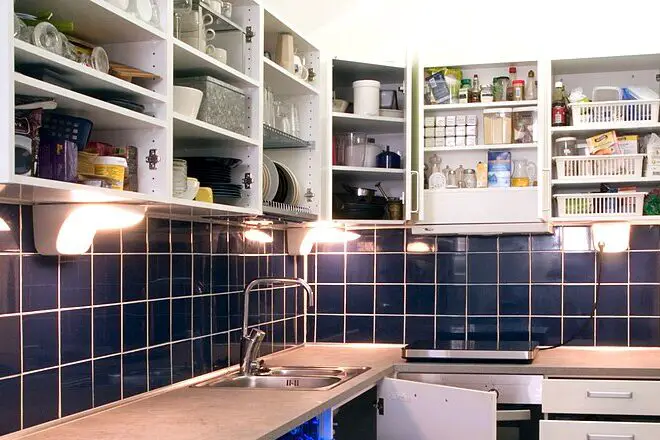
Open shelves are undeniably stylish, especially in minimalist or rustic kitchens. They create an airy, open feel and offer a perfect opportunity to show off pretty dishware and carefully curated decor. The aesthetic is clean and modern, ideal for Instagram or magazine spreads. But if you actually cook, those dishes are going to get greasy and dusty fast.
The problem is that kitchens generate a lot of steam, oil, and airborne particles—even with good ventilation. Open shelves require constant cleaning, and the items on them need to be both attractive and practical. If you cook often, you’ll find it annoying to reach for things without doors to hide the mess. In reality, the convenience of cabinets trumps the visual appeal of open shelving for most home chefs.
2. All-White Everything

An all-white kitchen can feel fresh, modern, and even luxurious when paired with sleek countertops and gleaming tile. It reflects natural light beautifully and makes small spaces look bigger. Interior designers love this look for staging homes or achieving a timeless vibe. But if you use your kitchen every day, white becomes a maintenance nightmare.
Every splash, fingerprint, or crumb stands out like a crime scene clue. You’ll find yourself constantly wiping down surfaces to keep them looking presentable. White grout between tiles can quickly discolor, especially around cooking zones. It’s a look that works great in theory—or in kitchens used more for show than stir-fry.
3. Handleless Cabinets and Drawers
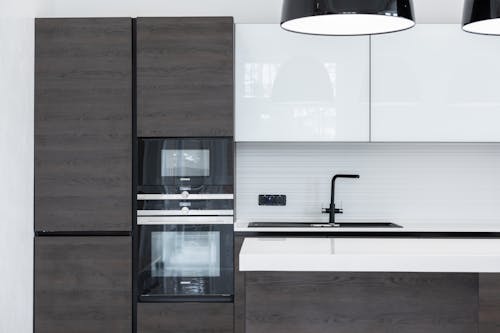
Handleless cabinetry gives your kitchen a clean, futuristic look with smooth surfaces that feel almost architectural. It’s especially popular in ultra-modern homes and looks amazing under directional lighting. The seamless design removes visual clutter and makes the whole space feel sleeker. But in real-world cooking scenarios, they’re often more annoying than chic.
You usually have to push them open with your hip, elbow, or flour-dusted fingers. That sounds slick until your sticky hands are hunting for an invisible edge mid-recipe. These mechanisms can also wear out faster than traditional handles, especially in high-use drawers. It’s a case of sacrificing practicality for a showroom finish.
4. Waterfall Countertops
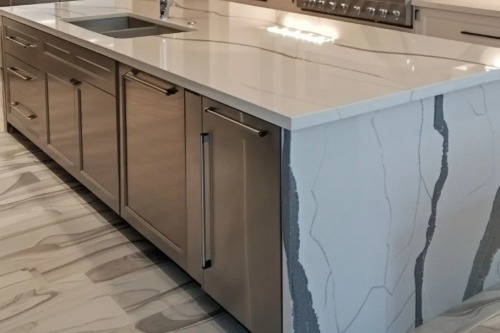
Waterfall countertops—where the material flows down the sides like a curtain—are undeniably dramatic. They offer a sculptural elegance that turns your kitchen island into a focal point. With premium materials like marble or quartz, they shout “custom build” in the best way. But if you cook a lot, those dramatic edges quickly turn into bump zones.
The vertical surface is a magnet for scuffs, dents, and even toe injuries if you’re moving fast around a tight kitchen. They’re also harder to clean since crumbs and spills like to hide along the seams. Plus, this design eats up valuable cabinet or seating space underneath. Gorgeous, yes—but not always the most efficient use of your layout.
5. Floor-to-Ceiling Glossy Cabinets
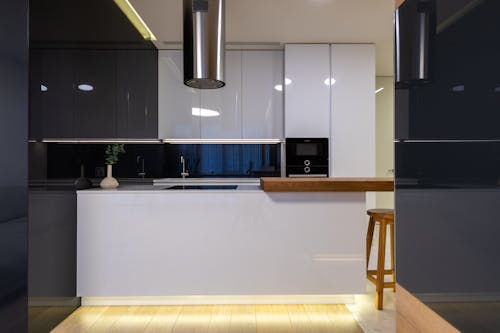
Glossy, high-gloss cabinetry can create a high-end, modern vibe that bounces light around the room. When paired with handleless design, the result is ultra-sleek and often found in luxury condo kitchens. It looks especially nice in photos and under artificial lighting. But the moment you actually touch anything, you’re dealing with a smudge-fest.
Every fingerprint, splash, or cooking splatter becomes instantly visible. You’ll find yourself constantly polishing doors just to keep them from looking grimy. If you’re opening cabinets multiple times a day, the maintenance adds up fast. The finish ends up creating more work for anyone who’s cooking often and not just admiring the view.
6. Open Concept with No Vent Hood
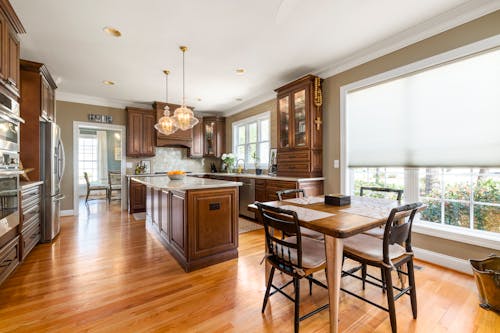
Open-concept kitchens feel social, airy, and inclusive—great for entertaining. They’re often shown without bulky range hoods to preserve clean sightlines to the living or dining area. That looks amazing in a real estate listing or home tour. But once you start cooking onions, bacon, or anything with actual flavor, you’ll regret skipping that vent.
Smells, steam, and grease particles have nowhere to go and end up circulating around your whole home. Without a strong range hood, lingering odors can settle into fabrics and furniture. Even worse, humidity can build up on nearby walls or ceilings. The aesthetic might be winning, but it comes at the cost of air quality and cleanliness.
7. Open Under-Counter Storage
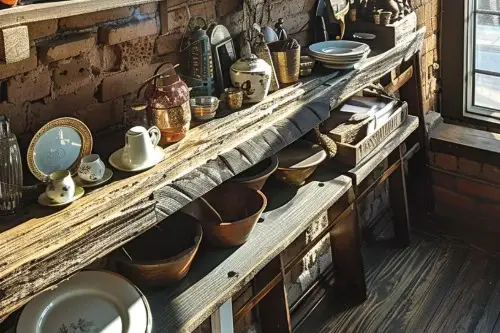
Exposed under-counter shelves are a trendy alternative to traditional base cabinets. They make the kitchen feel more open and are perfect for showing off beautiful cookware or baskets. This approach is often used in small-space or Scandinavian-inspired designs. But from a practical standpoint, it’s a recipe for dust and chaos.
Anything stored low and out in the open is going to collect grime, pet hair, or crumbs over time. And unless you’re obsessively neat, things start looking cluttered fast. You also lose the protective function of cabinet doors, which hide away less-attractive essentials. It’s more magazine spread than real-life solution for a busy kitchen.
8. No Upper Cabinets at All
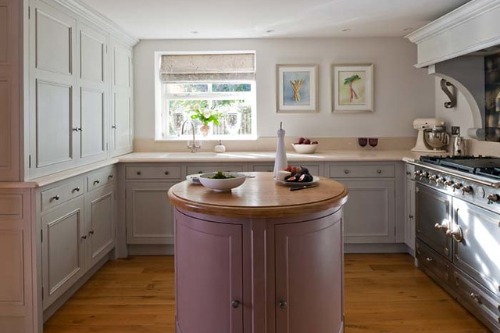
Ditching upper cabinets can make a kitchen feel bigger and brighter, especially in smaller spaces. It’s a look that’s been popular in minimalist and contemporary homes. With a gorgeous backsplash or statement range hood, the aesthetic really shines. But losing all that storage is a major hit if you cook regularly.
You’ll have to find space elsewhere for pantry items, glassware, and small appliances. This often means crowding your counters or cramming base cabinets. The extra walking, bending, and searching for tools adds up fast during meal prep. Unless you have a massive walk-in pantry, this trend can be frustrating in real life.
9. Statement Lighting That’s Too Low

Oversized pendant lights or chandeliers above the island are all the rage right now. They bring drama and personality to the space, often becoming the kitchen’s most eye-catching feature. The right fixture can tie the whole design together and elevate the look instantly. But if it hangs too low, you’ll be ducking every time you reach for a mixing bowl.
Low-hanging lights can obstruct your line of sight while cooking or chatting with guests. They’re also more likely to collect grease or dust from the stove nearby. And in smaller kitchens, they can make the space feel cramped rather than grand. It’s a case of prioritizing style over straightforward usability.
This post 9 Kitchen Design Trends That Only Work If You Never Cook was first published on Greenhouse Black.
